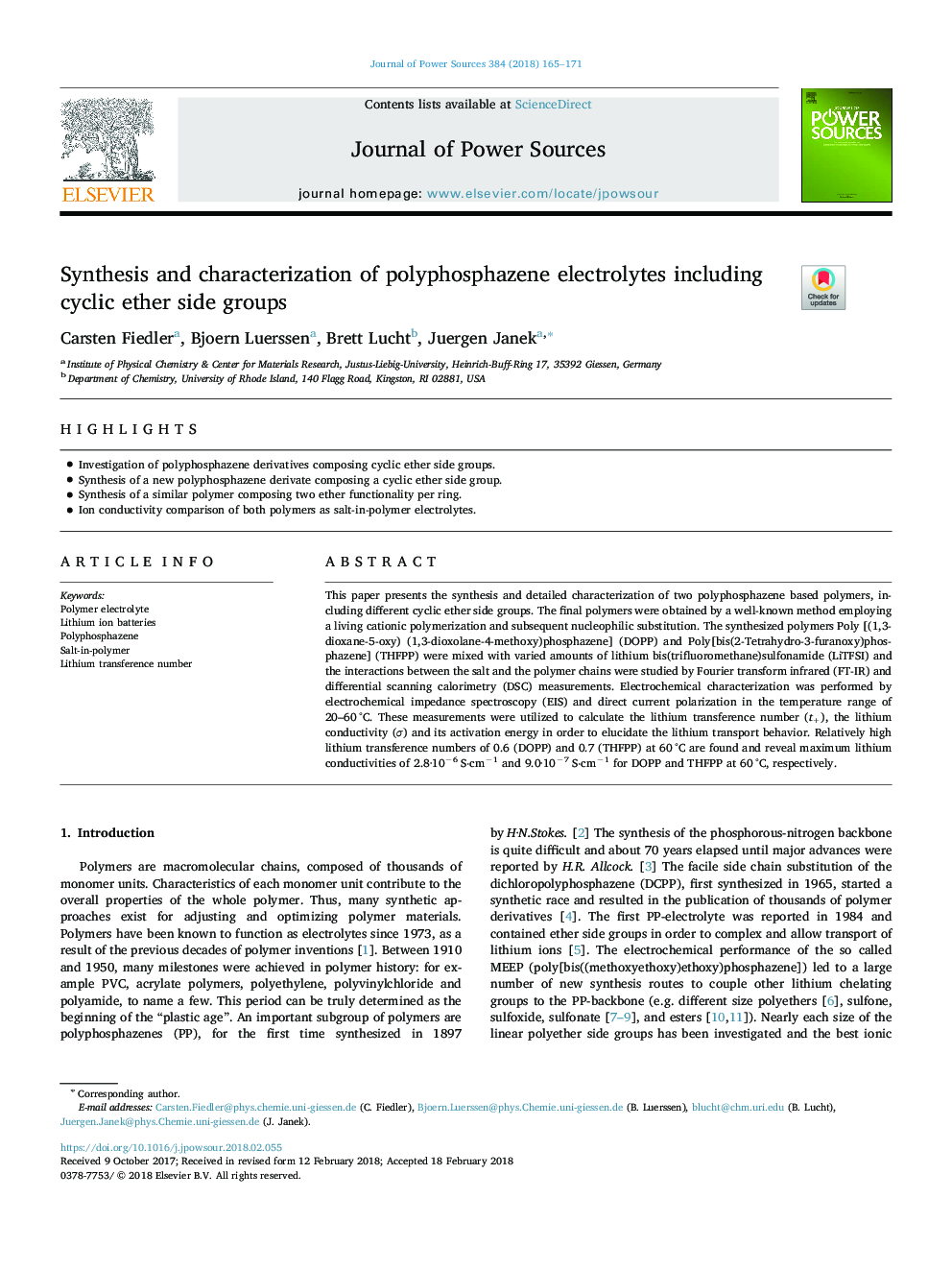| Article ID | Journal | Published Year | Pages | File Type |
|---|---|---|---|---|
| 7725317 | Journal of Power Sources | 2018 | 7 Pages |
Abstract
This paper presents the synthesis and detailed characterization of two polyphosphazene based polymers, including different cyclic ether side groups. The final polymers were obtained by a well-known method employing a living cationic polymerization and subsequent nucleophilic substitution. The synthesized polymers Poly [(1,3-dioxane-5-oxy) (1,3-dioxolane-4-methoxy)phosphazene] (DOPP) and Poly[bis(2-Tetrahydro-3-furanoxy)phosphazene] (THFPP) were mixed with varied amounts of lithium bis(trifluoromethane)sulfonamide (LiTFSI) and the interactions between the salt and the polymer chains were studied by Fourier transform infrared (FT-IR) and differential scanning calorimetry (DSC) measurements. Electrochemical characterization was performed by electrochemical impedance spectroscopy (EIS) and direct current polarization in the temperature range of 20-60â¯Â°C. These measurements were utilized to calculate the lithium transference number (t+), the lithium conductivity (Ï) and its activation energy in order to elucidate the lithium transport behavior. Relatively high lithium transference numbers of 0.6 (DOPP) and 0.7 (THFPP) at 60â¯Â°C are found and reveal maximum lithium conductivities of 2.8·10â6â¯Sâ
cmâ1 and 9.0·10â7â¯Sâ
cmâ1 for DOPP and THFPP at 60â¯Â°C, respectively.
Related Topics
Physical Sciences and Engineering
Chemistry
Electrochemistry
Authors
Carsten Fiedler, Bjoern Luerssen, Brett Lucht, Juergen Janek,
